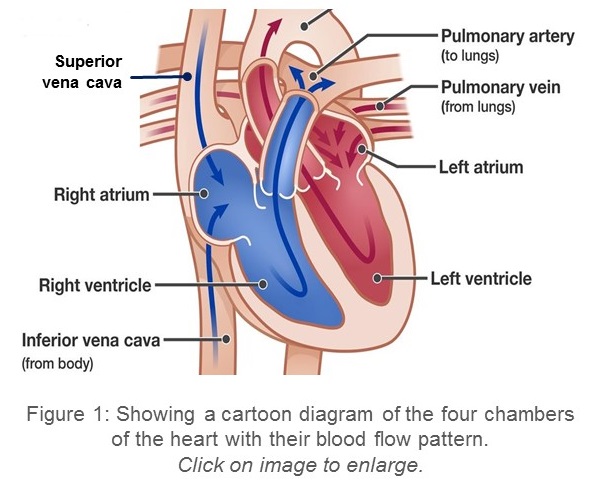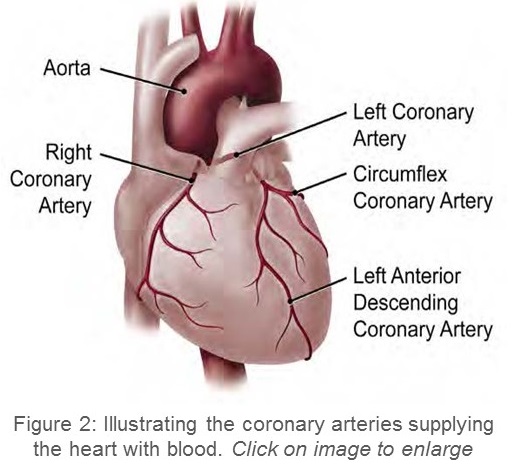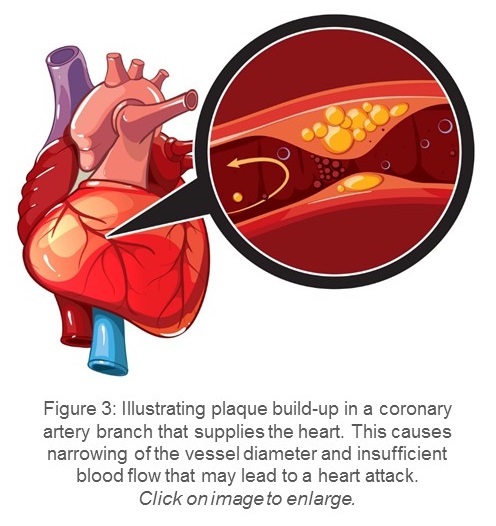By Rosemarie Tracy, RN, BSN. Guest writer. Medically reviewed by the Datelinehealth Africa Team.
 Heart attack, is the leading cause of death worldwide. It is also becoming increasingly so in Sub-Saharan Africa (SSA) over the last 30 years.
Heart attack, is the leading cause of death worldwide. It is also becoming increasingly so in Sub-Saharan Africa (SSA) over the last 30 years.
A 2017 global report indicated that heart attack was responsible globally for about 9 million deaths (16% of all deaths) and accounted for 50-60% of all cardiovascular deaths. For comparison, in SSA, heart attack was estimated to cause 5% of all deaths, and 40% of cardiovascular disease (CVD) deaths.
There is growing evidence however that the low heart attack rate in SSA may be due to a lack of awareness of symptoms, poor access to care because of scarce resources, poor infrastructure, and deficit of cardiac professionals to provide care for those with cardiovascular diseases.
Additionally, victims of heart attacks and other cardiovascular diseases in SSA are significantly younger compared to higher-income countries. This indicates a mounting risk to sustainable socioeconomic and national development. Primary prevention should always be the key course of action to reduce disability and deaths from CVDs.
Global initiatives to combat this increasing burden, including DatelineHealthAfrica.org can cultivate knowledge about diseases, disease prevention, and health policy that can foster the development of healthcare infrastructure for vulnerable populations in Africa.
More light will be shed on the following:
 The heart, is a muscular organ that pumps oxygenated blood to the body. It contains four chambers through which blood flows in specific patterns. The chambers include the right and left atria on top, and the right and left ventricles on the bottom (figure 1).
The heart, is a muscular organ that pumps oxygenated blood to the body. It contains four chambers through which blood flows in specific patterns. The chambers include the right and left atria on top, and the right and left ventricles on the bottom (figure 1).
The heart has several amazing mechanisms that trigger each beat. These include:
Coronary Arteries
All body tissues need oxygen to survive. The coronary arteries deliver oxygenated blood to heart muscle tissue through an intricate system of arteries that originate from the ascending aorta and wrap around the outside of the heart (figure 2).
 Cardiovascular Disease refers to several conditions that include:
Cardiovascular Disease refers to several conditions that include:
In Sub-Saharan Africa, Heart attack and stroke are significantly associated with high blood pressure (hypertension) than seen in other high income countries (HIC). However, a build-up of fatty deposits (atherosclerosis) on the inside walls of the arteries called plaque is also a contributory factor. Atherosclerosis and high blood pressure often co-exist and have a cause-effect relationship.
Other contributory mechanistic factors include blood clots (soft coagulated blood) that may form elsewhere in the body (usually leg veins) and becomes lodged in the vessels of the brain, heart, or lung.
A blood clot called a thrombus remains in the place where it forms. When a thrombus breaks loose and travels through the body, it becomes an embolism. In this discussion, I will focus on thrombus/thrombosis.
Plaque carries a two-fold threat;
When plaque inside the heart arteries thickens, it obstructs the free flow of blood, and you can suffer a heart attack (see figure 3).
 When a piece of plaque breaks off inside the heart arteries, plaque rupture takes place. Your body responds to it like a cut on your finger, and blood starts to clot to stop the bleeding.
When a piece of plaque breaks off inside the heart arteries, plaque rupture takes place. Your body responds to it like a cut on your finger, and blood starts to clot to stop the bleeding.
At the site of the plaque rupture, a clot called a thrombus forms. A thrombus can block the artery from allowing blood to circulate. A more severe type of heart attack ensues, although in both scenarios, you may experience severe symptoms or very little at all.
A blockage of the vessels supplying the heart prevents oxygenated blood from reaching heart tissue. When heart tissue doesn't receive sufficient oxygen supply, ischemia (i.e., nutrient and oxygen starvation) occurs. Ischemia can progress to tissue death (necrosis). Ischemia and necrosis can damage the heart and cause mild to severe dysfunction. This results in a decrease of the pumping action of the heart and may lead to heart attack and death.
The two categories of risk factors are classifiable as:
In Africa, the four highest risk factors in this category include:
Others are:
These include:
Unfortunately, family history won't change. Taking control of traditional risk factors such as making lifestyle modifications can lessen your risk of having a major cardiovascular event such as a stroke or heart attack:
Include:
One or a combination of the above signs and symptoms may signal a heart attack.
More than 40% of patients with diabetes are not aware of their diagnosis in SSA.
Globally, women tend to have signs and symptoms unrelated to classic chest pain, such as:
Because their symptoms may be less obvious, physicians tend to misdiagnose a woman's heart attack, leading to poor outcomes.
Preeclampsia (high blood pressure during pregnancy) predisposes women to a two-fold increase in the risk of coronary heart disease, stroke, and death.
Menopause increases women’s risk of cardiovascular disease. Less estrogen relates to increased cholesterol, thus plaque building up on vessel walls that may result in a heart attack or stroke.
Metabolic Syndrome and high cholesterol: These cardiovascular risk factors increase with menopause beyond the effects of normal aging. Metabolic syndrome is diagnosed when a person has three or more of these individual risk factors: abdominal obesity, high triglycerides, low HDL cholesterol, high blood pressure, and high blood sugar.
For women, the years leading up to and after menopause are a critical time to care for their health.
More research is critically needed on several aspects of heart attack and cardiovascular diseases in African women for purposes of informing policy towards care.
CPR is a lifesaving practice that can greatly increase the chances of survival in a heart attack.
Regrettably, facilities that are equipped to perform cardiac catheterisation are limited and in some cases are not available in many African countries.
As much of Africa progresses in its rapid urbanisation and the burden of cardiovascular disease rises, it is hugely important for a majority of Africans to be continuously trained at say yearly or bi-yearly intervals in CPR Basic Life Support (BLS) in public or private training facilities within the context of public health policy. Funding for the training is a wise public health investment and should be readily provided.
Categories of people that should be trained include:
Heart attack is the leading cause of death globally and the burden is increasing in Africa with rapid urbanisation occurring in the region. Here are things you can do to take control of your heart attack risks:
Doing these things can reduce your risk of a heart attack. Your heart will thank you.
Minja NW, Nakagaayi D, Aliku T, Zhang W, Ssinabulya I, Nabaale J, Amutuhaire W, de Loizaga SR, Ndagire E, Rwebembera J, Okello E, and Kayima, J. Cardiovascular diseases in Africa in the twenty-first century: Gaps and priorities going forward. Frontiers in Cardiovascular. Volume 9. 2022. https://doi.org/10.3389/fcvm.2022.1008335
American Heart Association. What is Cardiovascular Disease? Last reviewed, May 17, 2017. Accessed, April 14, 2023.
Chandrashekhar, Y. , et al. Resource and infrastructure-appropriate management of ST-segment elevation myocardial infarction in low-middle-income countries. Circulation. 2020;141:2004–2025. https://doi.org/10.1161/CIRCULATIONAHA.119.041297
Yuyun MF, Sliwa K, Kengne AP, Mocumbi AO, Bukhman G. Cardiovascular Diseases in Sub-Saharan Africa Compared to High-Income Countries: An Epidemiological Perspective. Glob Heart. 2020 Feb 12;15(1):15. doi: 10.5334/gh.403.
American Heart Association. What Is A Heart Attack? Last reviewed, December 2, 2022. Accessed, April 18, 2023.
Bentzon JF, Otsuka F, Virmani R. Mechanism of plaque formation. Circulation Research. 2014;114:1852–1866. https://doi.org/10.1161/CIRCRESAHA.114.302721
American Heart Association. Understand your risks to prevent a heart attack. Last reviewed, December 6, 2022. Accessed April 18, 2023.
Triant VA. Cardiovascular disease and HIV infection. Curr HIV/AIDS Rep. 2013 Sep;10(3):199-206. doi: 10.1007/s11904-013-0168-6
American Heart Association Newsroom. Early menopause linked to higher risk of future Coronary Heart Disease. Published, May 20, 2021. Accessed, April 20, 2023.
Wu. P, Haththotuwa R, Kwok S, Babu A, Kotronias RA, Rushton C, Zaman A, Fryer AA, Kadam U, Chew-Graham CA, Mamas MA. Preeclampsia and Future Cardiovascular Health: A systematic review and meta-analysis. Circulation: Cardiovascular Quality and Outcomes. 2017;10:e003497. https://doi.org/10.1161/CIRCOUTCOMES.116.003497
American Heart Association. Changing the Way We View Women's Heart Attack Symptoms. Published, March 6, 2020. Accessed, April 18, 2023.
Related: Hypertension in Nigerian adults: Essential things to know.
Published: April 21, 2023
© 2023. Datelinehealth Africa Inc. All rights reserved.
Permission is given to copy, use and share content without alteration or modification and subject to attribution as to source.
DATELINEHEALTH AFRICA INC., is a digital publisher for informational and educational purposes and does not offer personal medical care and advice. If you have a medical problem needing routine or emergency attention, call your doctor or local emergency services immediately, or visit the nearest emergency room or the nearest hospital. You should consult your professional healthcare provider before starting any nutrition, diet, exercise, fitness, medical or wellness program mentioned or referenced in the DatelinehealthAfrica website. Click here for more disclaimer notice.